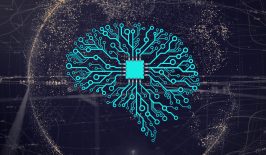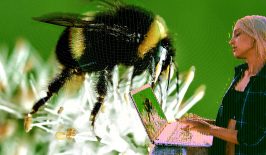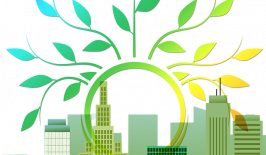Over the past years, Internet of Things (IoT) has become one of the most important trends of the 21st century. Basically, it is all around us – these devices range from common household requirements to sophisticated industrial tools. By 2025, IoT Analytics expects the global number of connected IoT devices to more than 27 billion active endpoints. It seems there is a revolution happening that transforms the way we live, but the majority of people still do not quite understand what it is all about.
So, What Is the Internet of Things?
Putting it simply, the Internet of Things refers to a sort of technological umbrella, a smart infrastructure that connects physical objects and allows them to send and receive data – to and from us and between each other. That means all kinds of objects – household appliances, machines, vehicles, even plants and animals – can be identified and localised, communicating with each other and transforming into “smart” objects that can react to their surroundings and interact intelligently with people. It is the sum of three key ingredients: sensors (embedded in the objects), connectivity and people.
So while we are using social media in the web 2.0 to put our lives on the internet, in the IoT we are moving the internet to the real world. Where previously computers, smartphones and tablets were the connection points, now it is everyday objects, that via sensors, cloud structures and big data are transformed into smart sources of data.
Much like the World Wide Web did back in the 1990s, the Internet of Things has been gradually seeping into our lives. Think that you are immune? Well, you are probably wrong. Something as simple as using your computer’s built-in GPS and Wi-Fi to track and display your location, or your fitness tracker to count how many steps you take each day and upload them to the internet, is an example of the Internet of Things in action.
Why Does It Matter?
When talking about concrete examples of the internet of things in action, the classic one that comes up is the smart fridge that can tell if your milk’s gone bad and lets you automatically order a new carton via your smart phone. Alternatively, there is the Internet of Things toaster known as “Toasteroid” that can print the weather report on your breakfast each morning.
It is often the more frivolous examples of the Internet of Things in action that get the most coverage, but its potential – from resource-protecting to potentially life-saving – should not be underestimated. For example, some researchers are proposing a network of IoT sensors and a fleet of drones to detect wildfires at an earlier stage.
IT and industry are investing billions in industry 4.0 technologies, carrying out their own research and buying up innovative startups. This latest technological revolution is well under way and whether it’s public infrastructure, our private lives, industry, science or the economy, its sphere of influence seems practically limitless.
Can the IoT Make Our Lives More Sustainable?
When it comes to sustainability, IoT systems are ideal because of their ability to not just analyse but also communicate. Ecosystems, and the complex interactions between elements within them, are just too complicated for single technologies to tackle. By working in pairs or as part of even larger networks, IoT solutions are different.
Let’s take “smart” homes as an example. They might be fitted with smart meters, where heat sensors inside a building analyse the current temperature and communicate with the thermostat to turn the heating down on warm days. Or there might be a sensor in your mobile phone that communicates to the smart lights that the device (and therefore you) has left the house, and the lights can be turned off. A house with these kind of functions does not just promise an increased level of comfort – it also helps protect against the environmentally-damaging effects of human error, allowing for reduced resource use and improved energy efficiency.
By monitoring the day-to-day workings of humans, the environment, industry, transportation, climate and the way they live, work and move, it is possible to collect vast amounts of data on a micro level about their interconnectedness, and thus build up an image of the world and the way it works on an all-encompassing macro level. This information can then be used by governments, businesses and individuals to inform and influence sustainability practices – meaning fewer missed opportunities for conservation.
Let’s take a closer look at the potential that the IoT has to affect different areas of our lives: from cities, smart grids, industry and farming, all the way to our capitalist economic system itself.
Smart Cities
By the year 2050, an estimated 75 percent of all people in the world will live in urban environments. Fast growing metropolises will face the huge challenge of reducing their environmental impact whilst sustaining mobility networks and preserving resources. The Internet of Things is often touted as a possible solution.
A research organisation in the UK recently published their list of the “World’s Smartest Cities”. Second on the list was a city you might more quickly associate with Gothic architecture and cobbled streets than innovative technologies – the Catalonian capital of Barcelona.
But ever since the city launched a smart city project back in 2012, it’s been held up as an example of the way that a digitialised city can improve services for its inhabitants and save resources at the same time. A couple of the things the city did include:
- installing smart waste bins that monitor waste levels and optimise collection routes
- switching the city’s lampposts to LED (thus instantly reducing energy consumption) and fitting sensors on them that can tell when streets are empty and dim the lights wherever possible
- guiding drivers to available parking spaces via sensors imbedded in the asphalt, thus reducing both congestion and emissions
- regulating irrigation systems by measuring rain and humidity and modifying the amount of water actually needed – an intelligent move after the city literally ran out of water in 2008
All of these improvements resulted in reported energy savings of 30 percent across the urban lighting system, a 25 percent increase in water conservation and millions of dollars saved annually – a clear incentive for local governments to introduce systems such as this one.
Scaling up the Internet of Things to city level can certainly save a huge amount of resources, time and money, but there are a few obvious downsides to governments being able to collect and store so much information about the day to day lives of ordinary people. Ones opinion on the issue will likely depends on whether they are happy to give up their anonymity, and in some ways their privacy, for some kind of greater good – whether it is more resource-efficient cities or cleaner and quieter streets. Check out RESET’s more in-depth article on the topic – Smart Cities: Efficient, Sustainable, Digitised Living – for more information about smart cities.
Smart Grids and Smart Meters
The use of renewable energies is on the rise throughout the world, but the majority of our electricity is still generated by the burning of fossil fuels such as coal, which emits huge amounts of carbon dioxide into the atmosphere. In order to both facilitate the increased use of green energies and meet the increasing demand for power, it is essential for us to develop electricity grids that are more reliable, energy efficient and thus more sustainable.
The IoT could hold the key here, by turning traditional energy grids into “smart grids” – networks that automatically track energy flows and help us to balance electrical consumption and supply, reduce power losses and successfully integrate and use renewable energy sources.
Renewable energies present conventional electricity grids with new challenges – the power supply has to stay flexible and manageable, regardless of when the wind blows or the sun shines. Load management, AKA the systems in place to match supply with demand, can be balanced effectively thanks to the IoT – by monitoring the performance of wind turbines and solar panels and sending the information to the cloud, the electricity supply can be controlled automatically based on the data received.
When it comes to the end consumers, smart meters can be used to receive consumption information, thus allowing people to adapt their energy usage to the varying prices during the day, enabling them to optimise their usage and save money on their energy bills. It is expected that in the EU almost 77 percent of consumers will have a smart meter for electricity by 2024.
Farming and Industry
Farming without the help of IT is unthinkable nowadays. Tractors, combine harvesters and even plants are all communicating with each other in order to optimise work processes and achieve greater productivity – whilst conserving resources at the same time. According to the Business Insider, due to the growing demand for food, farmers are turning to the IoT for analytics and greater production capabilities. Smart agriculture is already becoming more commonplace among them, using agricultural drones and sensors.
Drones and satellites can survey a farmer’s land and generate crop and topographical data, sensors in fields can measure the acidity and climate forecasts can be generated and weather patterns predicted for the upcoming weeks based on their location – all of this information can be delivered in real time to the farmer via their smartphone, which allows them to make informed decisions about what to plant and where.
German agricultural machinery manufacturer CLAAS even has a smart tractor with plant sensor technology that measures plant nitrogen requirements and applies enough fertiliser in exactly the right places to meet but not exceed those needs. And the OnFarm system uses sensors to check soil moisture, weater and pesticide usage and allows farmers to use the data to remotely monitor their assets, their resource usage and prepare in advance for possible upcoming crop issues. This is so-called precision farming – which saves resources and protects the environment by decreasing crop loss, and thanks to more concentrated and efficient land use, will help cut back on deforestation.
The situation is similar in manufacture and industry too – in a 2015 survey of 600 manufacturing companies, a huge 97 percent of them rated the IoT to be the most significant technological change of the last decade. Sensors on production lines can increase efficiency and cut down on waste, ultimately resulting on decreased costs, but also increased sustainability. And when it comes to distribution, IoT can also play a role, tracking products from the factory to the consumer and hopefully cutting down the distance that products need to travel.
Sensors installed inside equipment can also be used to monitor the current repair status and indicate to manufacturers when they require maintenance – fixing them before they stop working all together. When a certain device is literally beyond repair, sensors can let manufacturers know which components can be reused or repurposed, thus retaining their value and protecting the environment in the process.
Economy: Circular, Sharing or the End of the Economy as We Know It?
Systems like this, based on recycling and reusing rather than the current “take, make and dispose” model, are key to the much-talked about circular economy. The capability that the IoT has to improve the working life of machinery, and its ability to initiate repairs, is likely to prove particularly important when it comes to issues such as e-waste. Mobile phones, televisions and computers are usually discarded when they reach the end of their useful lives, rather than being recycled or repaired, creating a growing pressure on our environment. It is estimated that over six kilograms of e-waste per person is created every year.
But will companies and manufacturers be willing to increase the lifespans of their products, considering the way in which they are benefiting from planned obsolescence? Will they really buy into a technology that will ultimately result in consumers buying fewer of their products?
Find out more about the environmental, social and economic effects in our in-depth article on the Circular Economy.
Another alternative economic system that could be given a valuable boost by the IoT is the sharing economy, with some analysts even going so far as to say that IoT is exactly the high-tech platform that could transform society’s growing sharing culture into the new dominant economic paradigm of the 21st century. It could also narrow the income divide and make the whole global economy more democratic in the process.
The disruptive effects of a social and economic system based on sharing, a “collaborative commons” are already clear to see in today’s society: car rental schemes are making car ownership unattractive for millennials, taxi revenue is down due to Uber and Lyft, people are booking Airbnb apartments rather than hotel rooms.
And people are becoming prosumers too, sharing their own products and content with others: with blogs putting traditional publishers under pressure, e-learning competing with universities, and solar cells on our houses that are making us at least a little less dependent on energy companies and fossil fuels.
The IoT helps facilitate all this, thanks to its distributed, peer-to-peer nature that is able to connect a huge number of small entities — social enterprises, prosumers etc — into larger (even global) collective commons networks.
The influence that the IoT has on productivity and efficiency is also key here. American scientist Jeremy Rifkin believes that the combination of the IoT and the sharing economy is enough to bring about a so-called ‘Third Industrial Revolution’.
His vision sees a world in which: “prosumers will be able to share their 3D printed products with others on the Collaborative Commons by transporting them in driverless electric and fuel cell vehicles, powered by near zero marginal cost renewable energy, facilitated by an automated Logistics and Transport Internet.”
The result: fewer products being produced, fewer resources being used, thus a reduction in greenhouse gases, and economic power shifting from the powerful few to the many, thus making economic life more democratic. It sounds super-futuristic, but also, in some ways, not entirely foreign. Can we really achieve all this, as he believes, next years?
Want to know if the sharing economy really could bring about a lasting change in the world? Check out the RESET Knowledge article “Mine, Yours, Ours: The Sharing Economy”.
Smart but Fragile: Problems and Dangers of the Internet of Things
“Sometimes I’m terrified by it,” said the American computer engineer Vinton Cerf at the Heidelberger Laureate Forum 2015 – “It’s a combination of appliances and software, and I’m always nervous about software – software has bugs.”. Cerf, also known as one of the “Fathers of the Internet“, sees two main dangers to the IoT: a lack of clarity on legal issues and technological safety flaws.
First, the legal and political questions that have not as yet been clarified: Who is responsible for faulty software mechanisms? What happens when IoT applications get into the wrong hands? And what is the bottom line on the issue of data transparency? IoT devices, by their very nature, collect a huge amount of personal data on people – personal details, their habits, their location – sharing the information with other devices and storing the data in huge databases. How much information a health care insurer knows about its clients for example, is not a technological issue, but a social and political one. Users should therefore not only have the opportunity to understand exactly what kind of data is being collected on them, but also which data is not allowed to be passed on.
And secondly: although data security is a number one priority in the digital age, almost all security experts seem to agree that protection against cyber-criminals has been neglected in the production of IoT devices. Most are said to be insecure by design, with most products produced with convenience in mind (e.g. with default passwords that are easier to hack) rather than security or privacy. This allows for wide-scale DDoS (distributed denial-of-service) attacks where numerous compromised computer systems put a server or other online service out of action by overwhelming it with traffic.
This happened notably in September 2016, when the botnet Mirai knocked out the internet for huge numbers of people in the US. A few months later it attacked phone companies services in Germany and then the UK. The spread of the botnet lead to widespread speculation regarding future security breaches.
So, how can the IoT be made more secure – on a legal, political and technological level? Since May 2018, the EU has implemented the GDPR (the European General Protection Regulation) which strengthened data protection safeguards and provides individuals with additional and stronger rights. According to a Fundamental Rights Survey, 71 percent of people in the EU know about their national data protection authority.
Blockchain has also been presented a possible solution – its “distributed ledger” technology a possible way of ensuring that records and requests made by IoT devices are accurate and acting as they should – a method of transaction verification and a way of making the whole system more resilient.
The Internet of Things = Potential World Saver?
An Ericcson study suggesting that the IoT could reduce carbon emissions by around 15 percent by 2030. So, would that be enough to save the world as we know it? Probably not entirely – the IoT revolution will have a CO2 footprint all of its own.
In order for it to exist we will have to produce countless new, energy-intensive machines (like server infrastructures for example), and those global network setups will probably have to be powered constantly, 24 hours a day. Data servers are energy guzzlers – accounting for around 2 percent of all energy consumption in the US. And as more and more information is collected and stored, that means increased power consumption. Will the extra energy used by all the new data centres end up cancelling out all the “good” done by extra efficiency? Or will the new energy usage be offset, or even topped, by the increased energy savings?
Maybe, maybe not. What is there to stop data centres using the very same IoT technologies to increase their own efficiency? Projects are underway into “smart” data centres – ones that monitor server loads and reducing energy consumption or going into standby wherever possible. And according to Greenpeace’s 2017 Click Clean Report, big tech companies are also increasingly using renewable energies to power their servers, thus massively reducing their carbon footprint.
Conclusion
The Internet of Things is without a doubt the biggest technological revolution of our day and has huge possibilities for creating a more sustainable future – improving quality of life and curbing resource use. By connecting physical objects in order for them to communicate and interact with their environment, we are able to not just collect data about the way we live and things work, but also leverage it – analysing it in order to gain some kind of advantage for society or the environment. That means a fundamental transformation of the world we live in.
The IoT offers the chance to be more efficient – in transportation, buildings, manufacture and agriculture – and allows us to rethink the way that goods and produced and services delivered, maybe even leading to a fundamental shakeup of our economic model.
As increasing numbers of IoT devices come online, we are sure to face a number of challenges – including security, energy and e-waste issues – but hopefully innovation will be developing rapidly enough to comfortably tackle the hurdles that crop up along the way. And maybe, with the general increase in efficiency across all areas of life, that will grant us more time, space and freedom to develop, invent and innovate.
This article was originally published on 05/03/2017. It has since been updated on 04/20/2022 by Marharyta Biriukova.













